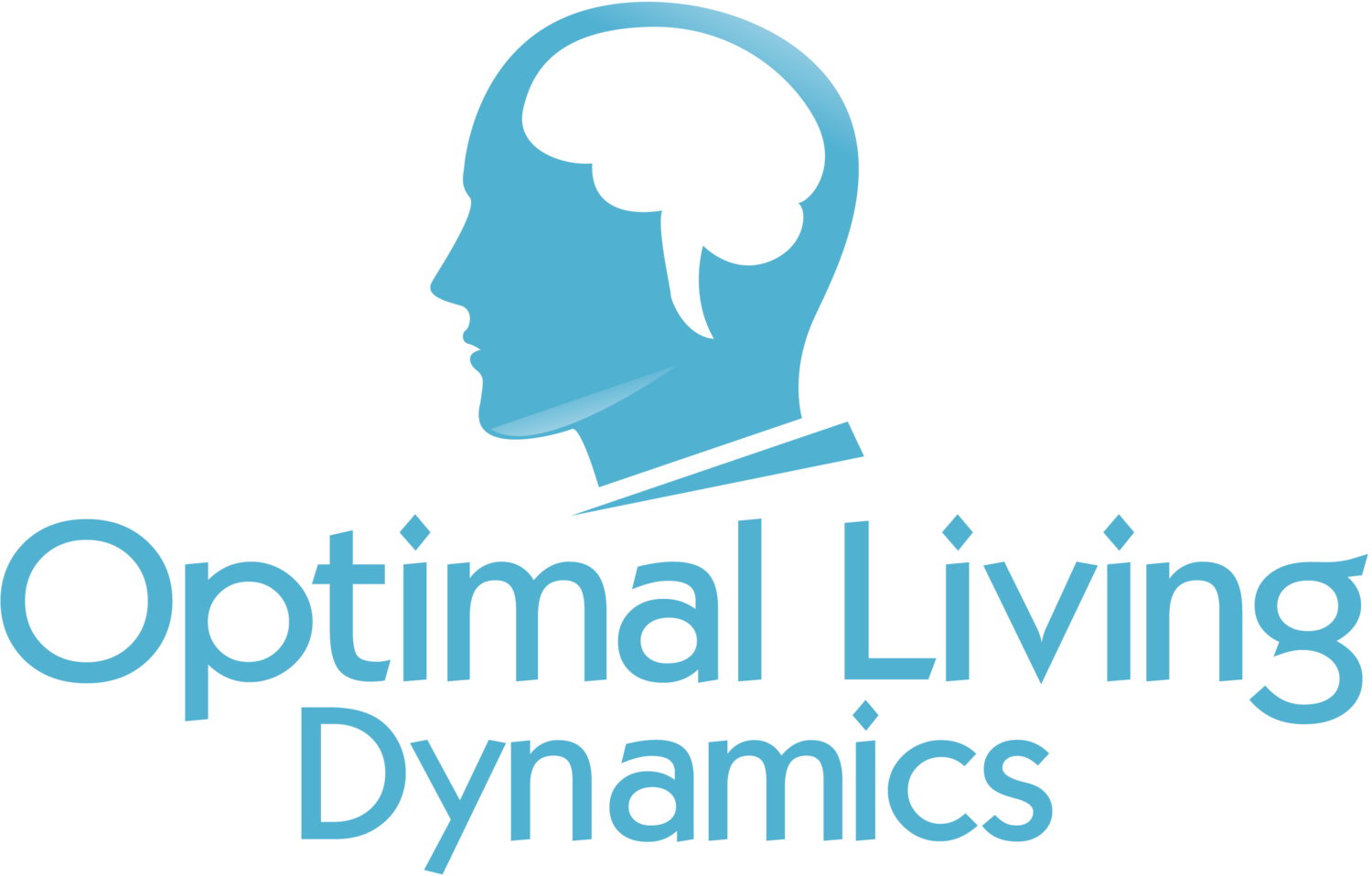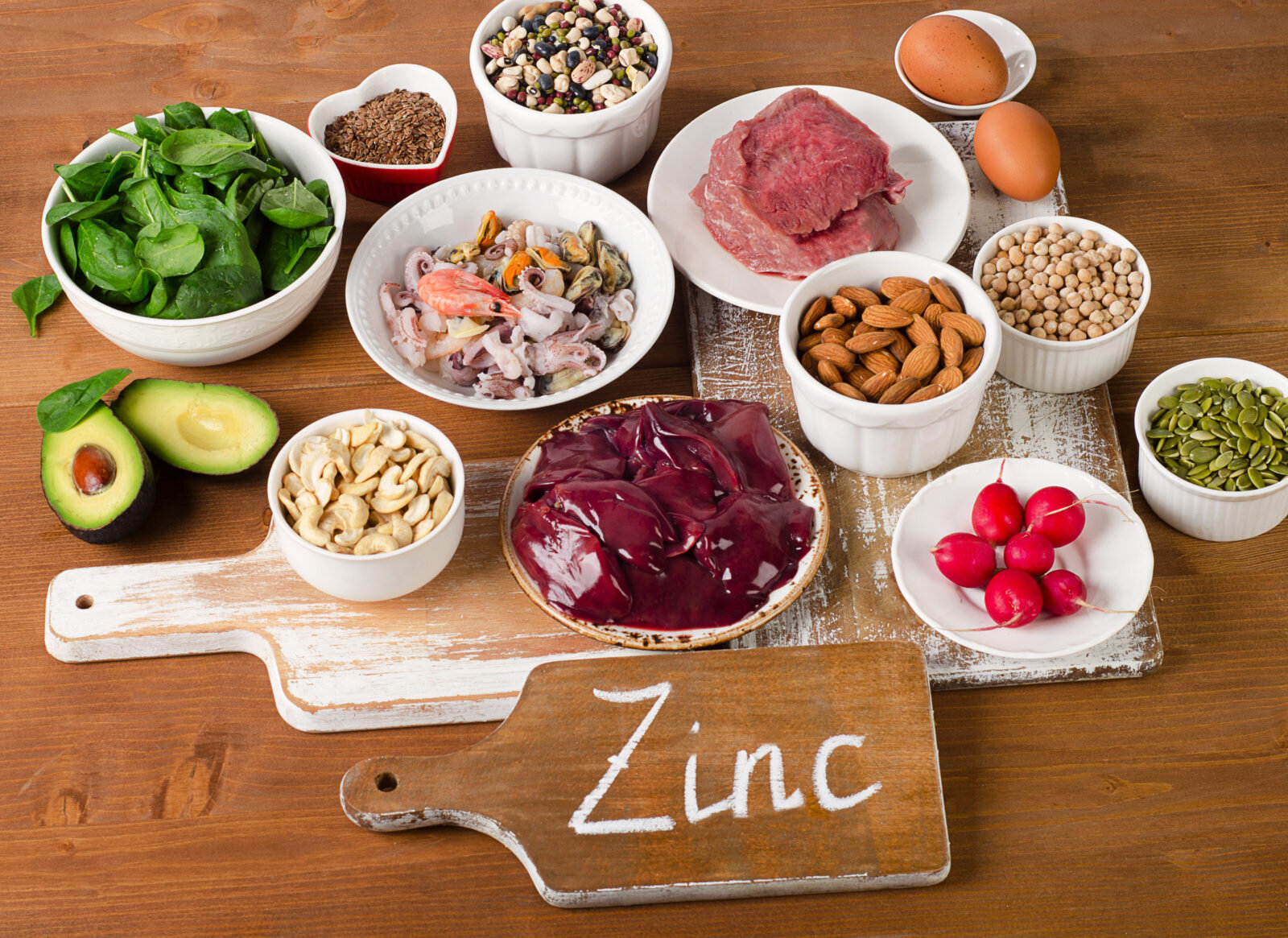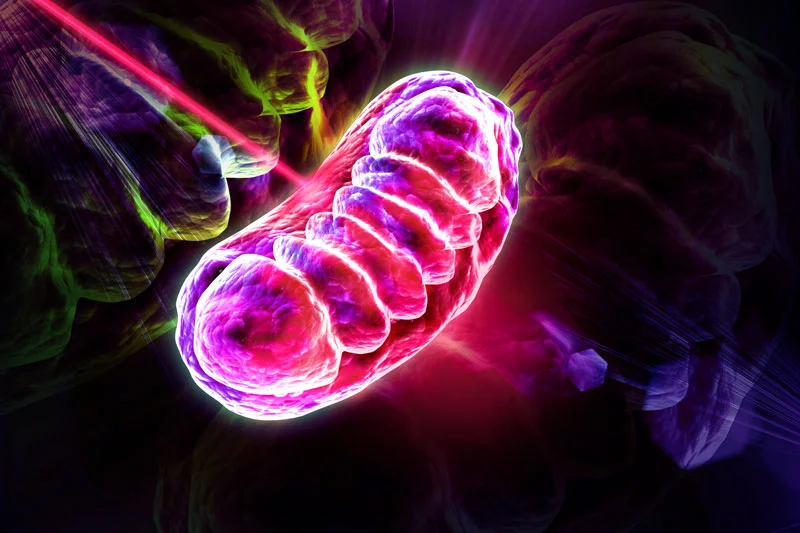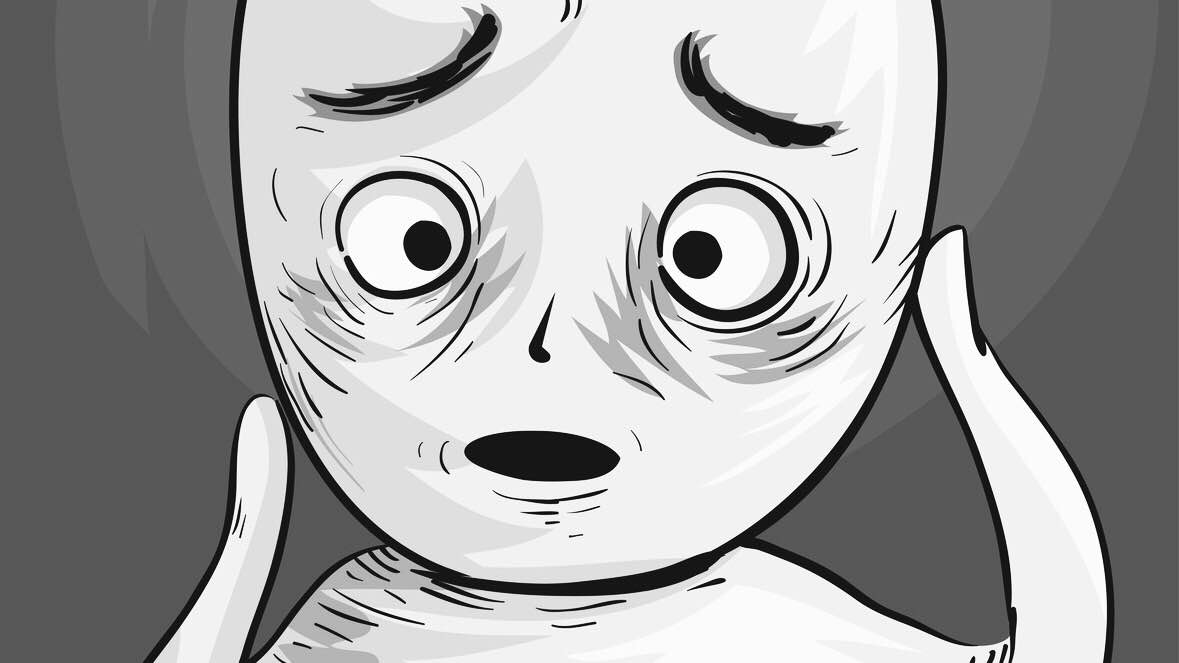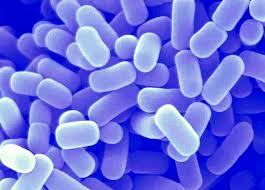Obsessive-compulsive disorder (OCD) is a chronic mental disorder characterized by obsessions (repetitive thoughts) and compulsions (repetitive actions).
It affects about 3 per cent of adults and 1 per cent of children (79).
It’s clear that both genetic and environmental factors contribute to the development of OCD.
Research shows that OCD is often inherited and passed down within families (89).
But experiencing abuse or trauma as a child also increases the risk of developing the disorder (86-88).
Both children and adults with OCD have high levels of cortisol (a stress hormone) in their blood, and increased glutamate (an excitatory neurotransmitter) in their brain (80-83).
They also have lower levels of GABA and serotonin, which are relaxing neurotransmitters in the brain (84-85).
Antidepressant medication is the standard treatment for OCD.
But many people prefer to manage and treat their OCD without having to rely on drugs.
Researchers have studied many different natural treatments for OCD, and this article explores the most promising ones.
The first section of this article explores the best nutrients, herbs and supplements to naturally treat OCD.
The second section of the article explores the best lifestyle habits, therapies and practices to combat and overcome OCD.
It is important to note that people with OCD often have to try more than one therapy to find one that works well for them.
You shouldn't suddenly change or discontinue your current OCD treatment without consulting with your doctor first.
But read on to learn about some of the best natural remedies and therapies that can help reduce your symptoms of obsessive-compulsive disorder.
The Best Nutrients, Herbs and Supplements for Naturally Treating OCD
1. N-Acetyl Cysteine
N-Acetyl-Cysteine (NAC) is a modified form of the amino acid cysteine.
It’s also the precursor to glutathione, your body’s master antioxidant.
Nowadays, we’re exposed to so many environmental toxins, which cause oxidative stress in the body and deplete our reserves of cysteine and glutathione.
But supplementing with NAC can increase and normalize your cysteine and glutathione levels.
This can combat and reduce oxidative stress in your brain, which can then help treat several mental illnesses, including OCD.
More than one study has found that NAC can significantly improve OCD symptoms in more than half of OCD patients (44, 46).
And a systematic review determined that NAC is effective at reducing the severity of OCD symptoms with minimal side effects (45).
NAC is included in Optimal Antiox.
Be sure to read this article all about the benefits of NAC.
2. Inositol
Inositol is a naturally-occurring molecule found in nearly all plants and animals. It plays a key role in various biological processes.
The brain has the highest concentration of inositol, where it plays an important role making and affecting neurotransmitters, including serotonin (1).
Inositol can be found in many foods, particularly fruit, especially cantaloupe and oranges (2). These foods are included in my Free Grocery Shopping Guide for Optimal Brain and Mental Health.
It used to be considered a B Vitamin (Vitamin B8). But it currently is no longer considered an essential nutrient because your body can produce inositol from glucose (3).
However, supplementation with inositol can still help reduce symptoms of OCD.
In one study, patients with OCD took 18 grams of inositol or placebo daily for six weeks.
At the end of the six weeks, the patients who took inositol had significantly lower scores on the Yale-Brown Obsessive Compulsive Scale.
The researchers concluded that inositol can effectively treat obsessive-compulsive disorder (4-5).
It’s important to point out that the research suggests that you need to take high doses (12 to 18 grams daily) if you want to experience the anxiety-reducing benefits of inositol.
I took high doses of inositol when weening off psychiatric medication.
I personally noticed a reduction in my obsessive-compulsive tendencies while supplementing with it.
Check out my full post about inositol to learn more about the benefits.
3. Zinc
Zinc is an essential mineral for mental health, especially if you have chronic anxiety.
Unfortunately, many people are deficient in zinc. In fact, it’s estimated that 2 billion people in the world are deficient. And this often includes people with OCD.
Researchers have found that patients with OCD tend to have much lower levels of zinc that individuals without OCD (49).
And one study showed that zinc supplementation helped reduce obsessions and compulsions without side effects (50).
I created and take the Optimal Zinc supplement to make sure my zinc levels are optimal. I created it because I want to give my clients and readers the very best zinc supplement so that they can experience superior results. I have found that many zinc supplements on the market fall short. Optimal Zinc includes several other nutrients (co-factors) that increase the absorption of zinc.
Besides supplementing, you should also eat plenty of healthy, whole foods that contain zinc.
Some of the best foods to optimize your zinc levels include:
Oysters
Grass-fed beef
Pumpkin seeds
Cashews
Mushrooms
Spinach
These foods are included in my Free Grocery Shopping Guide for Optimal Brain and Mental Health.
Check out my previous post all about zinc and anxiety if you want to learn more about how zinc impacts anxiety levels and can contribute to OCD.
Zinc can also stimulate your vagus nerve, which reduces anxiety.
4. Glycine
Glycine is an amino acid commonly found in protein-rich foods such as meat, fish, collagen and gelatin. These foods are included in my Free Grocery Shopping Guide for Optimal Brain and Mental Health.
Glycine is one of three amino acids that your body uses to make glutathione, the master antioxidant in your body.
Supplementing with 60 grams of glycine daily has been shown to reduce OCD symptoms (70).
I personally take collagen protein powder to make sure I get enough glycine. Or you can supplement with pure glycine powder.
Another option is to take sarcosine.
Sarcosine is a natural supplement that inhibits the uptake of glycine. By doing this, it increases the availability of glycine in the brain.
Researchers have found that sarcosine can lead to quick, profound and sustained improvements in OCD symptoms (71).
I’ve tried sarcosine and I find that it’s much more powerful and effective at improving mental health symptoms than taking glycine or collagen powder. It's very good at reducing anxiety.
5. Curcumin
Curcumin is the most heavily researched compound within turmeric, the spice that gives curry its yellow colour.
It’s one of my favourite natural compounds for optimal health.
Research shows that curcumin can significantly improve obsessive-compulsive symptoms by increasing serotonin (53).
Curcumin is a good option if you struggle with chronic inflammation, depression and OCD.
In my experience, it doesn’t help as much if you only have anxiety.
Curcumin is included in the Optimal Energy and Optimal Antiox supplements.
Since curcumin is a fat soluble, take it with a fatty meal.
6. Caffeine
Caffeine is a surprising natural remedy for OCD.
It usually increases anxiety and stress in most people.
But research shows that it can improve OCD symptoms.
Two clinical trials found that caffeine significantly reduces the severity of OCD symptoms in people with treatment-resistant OCD (47-48).
I recently cut out coffee completely but I used to drink this coffee.
You can also just take pure caffeine tablets if you want. I sometimes take tablets before a workout.
Coffee and caffeine can disrupt sleep though, so make sure you don’t drink it in the evening close to bed. Some people like me are really sensitive and have to stop drinking it very early in the day so that it doesn’t disrupt their sleep.
It's also a good idea to try to consume the whole coffee fruit, instead of just coffee or pure caffeine.
Traditionally, the coffee bean is extracted from the coffee fruit for roasting. And the surrounding fruit is discarded.
But that’s a problem because the coffee fruit contains several healthy compounds not found in coffee beans themselves.
And researchers have found that consuming whole coffee fruit concentrate can significantly enhance cognitive functioning.
That’s why I included coffee fruit in the Optimal Brain supplement.
7. Magnesium
Magnesium is the fourth most abundant mineral in the human body, and it’s absolutely essential for optimal mental health.
It’s absolutely essential for the proper functioning of your nervous system and optimal neurotransmitter activity.
Unfortunately, many people don’t get enough of it, even if they eat a healthy diet.
Research shows that low magnesium levels contribute and worsen many neuropsychiatric problems, including OCD.
Patients with OCD have significantly lower levels of magnesium in their blood than people without OCD (54).
So if you have OCD, it’s clearly important to make sure you’re getting enough magnesium so that you don’t have a deficiency.
Since most people are deficient, magnesium is one of the three supplements that I think everyone should be taking every day. That’s why it’s included in my Optimal Calm supplement.
Epsom salt baths are another great way to increase your body’s intake of magnesium.
You should also make sure you’re eating enough magnesium-rich foods on a regular basis, including:
Spinach
Chard
Pumpkin seeds
Almonds
Avocado
Dark chocolate
Bananas
These foods are included in my Free Grocery Shopping Guide for Optimal Mental Health.
8. Milk Thistle
Milk thistle is a herb commonly used to improve liver health and protect the liver from alcohol and other drugs.
Silymarin, one of the flavonoids in milk thistle, has been shown to increase serotonin levels in the brains of animals (72).
And one human study found that milk thistle works just as well as a popular SSRI antidepressant at reducing OCD symptoms (73).
9. Probiotics
As you probably already know, the health of your gut (and the bacteria within it) significantly influence your brain and mental health.
So not surprisingly, probiotics have been shown to be another possible natural remedy for OCD.
Studies also show that the neurotransmitter serotonin is produced in the gut.
By taking a probiotic supplement, you can enhance the diversity of the bacteria in your gut, create a better environment for the synthesis of serotonin, and therefore increase serotonin levels and activity in your brain (18).
Probiotics have also been shown to stimulate the vagus nerve and reduce inflammation, which tends to be elevated in people with OCD.
A systematic review of 38 studies concluded the probiotics can improve psychiatric disorder-related behaviors, including anxiety and OCD (55).
The researchers found that the following probiotics can help with OCD:
All three of these probiotics are included in the Optimal Biotics supplement.
You can also check out this article to learn more about the top 9 psychobiotics that can help reduce your anxiety.
And this article includes 5 ways to increase your good gut bacteria.
10. Borage Oil
Borage oil is a natural remedy made from the seeds of the Borago officinalis plant.
The oil is high in gamma linoleic acid (GLA), which is an essential fatty acid that must be obtained from your diet.
It’s commonly used to help reduce the inflammation that is linked to many chronic diseases.
Its anti-inflammatory effects may be why it helps reduce OCD.
Researchers have found that 500 mg of borage oil per day can reduce obsessive and compulsive and anxiety symptoms (75).
Animal research also shows that it can have anti-anxiety effects similar to benzodiazepines (74).
I took borage oil years ago but no longer feel the need to take it.
11. Iron
Iron is a trace mineral found in every living cell in our bodies.
It carries oxygen to all parts of your body, and low levels can leave you feeling tired, pale, irritable and foggy.
But research also shows that iron is an important cofactor in the synthesis of serotonin, and an iron deficiency can increase the risk of developing an anxiety disorder (6).
Researchers have also found that blood iron levels are significantly lower in patients with mild and moderate OCD (51).
Despite this, I don’t actually recommend supplementing with iron because some research suggests that too much iron can cause health problems and actually increase anxiety (7).
It’s definitely a much better idea to test your iron levels and naturally get your iron from food.
I make sure I get enough simply by taking grass-fed beef liver capsules.
Beef liver is one of the best sources of iron. But I don’t like the taste of cooked beef liver, so I go with the capsules instead.
Some other good sources of iron include:
Spirulina
Dark chocolate
Spinach
Sardines
Pistachios
Raisons
These foods are included in my Free Grocery Shopping Guide for Optimal Brain and Mental Health.
12. Ashwagandha
Ashwagandha (Withania sominifera) is a popular Indian herb that has been used for more than 3000 years. It’s sometimes called the “Indian Ginseng”.
It’s known as an “adaptogen”, which is a compound that balances the body and restores normal bodily functioning after chronic stress.
In one study, 30 people with OCD took ashwagandha for 6 weeks, and it notably and significantly reduced their OCD symptoms (52).
Animal research also shows that ashwagandha causes anti-anxiety effects, reduces OCD-like behaviour and improves stress tolerance in rats (8-13).
So it’s a pretty impressive herbal remedy for OCD and anxiety.
But how does it work?
By increasing serotonin and GABA in the brain, and lowering cortisol levels by 25 per cent (14-17).
Ashwagandha is one of the main herbs I took to help myself get off psychiatric medications.
It’s included in the Optimal Calm supplement.
13. Saffron
Saffron is a spice derived from the Crocus sativus plant.
It has a number of health benefits due to the medicinal compounds within it.
Saffron is one of the best supplements for reducing depression, anxiety and stress.
Safranal and Crocetin, two of the compounds within saffron, have been shown to stimulate GABA receptors and increase serotonin levels in the brain (19-20).
As a result, researchers have determined that saffron can reduce compulsive behavior (56).
14. Valerian
Valerian (Valeriana officinalis) is a natural herb, and the root of the herb has traditionally been used to treat insomnia.
But it also can reduce symptoms of OCD.
In one study, supplementing with 750 mg of valerian for eight weeks reduced symptoms by 25% in people diagnosed with OCD (57).
And in an animal study, valerian demonstrated anti-obsessive and anti-compulsive effects and researchers determined it's a good candidate for treating obsessive-compulsive disorder (21).
Scientists have collected a massive amount of research demonstrating that the compounds in valerian naturally reduce symptoms of OCD by:
Partially activating serotonin receptors
Maintaining serotonin levels
Binding to GABA receptors in the amygdala, a brain region associated with fear and anxiety
As a result of this, it creates a calming effect similar to anti-anxiety drugs like Xanax and Valium.
This is why valerian is often called “Nature’s Valium”.
Valerian is one of the first herbal remedies I took years ago to manage my anxiety at night and improve my sleep.
It’s included in this anti-anxiety supplement.
Valerian supplements include the roots and stems of the plant.
But you can also take it as a tea or tincture if you want.
The Best Lifestyle Habits, Therapies and Practices for Naturally Treating OCD
15. Cognitive Behavioral Therapy
Cognitive behavioral therapy (CBT) is one of the first-line treatments for OCD.
It involves challenging and changing unhelpful cognitive distortions and behaviors, improving emotional regulation, and developing personal coping strategies.
A meta-analysis of high-quality studies concluded that CBT is an effective method for treating OCD and reducing OCD symptoms (77-78).
I personally never found CBT helpful for my mental health issues but other people do.
It’s definitely worth trying if you OCD though.
16. Neurofeedback
Neurofeedback is a type of biofeedback that shows you your brain activity in real-time and teaches you how to self-regulate it.
Sensors are placed on your scalp to measure your brain’s activity, and the measurements are displayed using video or sound.
Personally, neurofeedback was one of the most impactful actions I took to overcome severe anxiety.
It works at a deep subconscious level, breaking the cycle of chronic anxiety.
It allows shifts you into a natural, healthier state of mind.
And research shows that it works for people with OCD.
One study showed that it can normalize brain activity in people with OCD (58).
If you want to try neurofeedback, it’s best to work with a qualified neurofeedback practitioner.
If you’re interested in neurofeedback, I recommend becoming a client and working with us to determine the best type of neurofeedback for you and your condition. I have found that some types of neurofeedback are completely ineffective and may even be harmful. So it’s very important to do the right type of neurofeedback that actually works.
I also sometimes recommend the Muse headband. It’s a decent substitute to real neurofeedback and gives you real-time feedback in your brainwaves while you meditate.
I previously wrote about the Muse headband here, and you can get it through the Muse website. But keep in mind that it’s definitely not as good as clinical neurofeedback.
Please note: If you’re interested in trying neurofeedback, I recommend becoming a client and working with us to determine the best type of neurofeedback for you and your condition. I have found that some types of neurofeedback are completely ineffective and may even be harmful. So it’s very important to do the right type of neurofeedback that actually works. It’s also critical to work with a qualified neurofeedback practitioner who knows what they are doing. Otherwise, you can get worse. We help our clients find a qualified practitioner in their area.
17. Light Therapy
Light therapy is another natural therapy that you may be able to use to manage and treat your OCD.
I came across a case study of a woman who had OCD and it got a lot worse in the winter.
But two hours of light therapy every day for two weeks improved her mood and reduced her symptoms of obsession.
What’s most surprising is that her condition remained stable for 16 months afterwards. She even made it through the next following winter (69).
I personally get sunlight every day during the spring and summer months to support my mental health.
I also use a number of different at-home devices to improve my mood and optimize my brain function.
Throughout the winter, I use a seasonal affective disorder (SAD) light box. I turn it on next to my desk in the morning.
I also have a Vitamin D sunlamp for the winter months.
And all year around, I use low-level red-light therapy (LLLT) to improve my mood and cognitive function. I use these three LLLT devices:
Optimal 1000 Brain Photobiomodulation Therapy Light (Combo Red/NIR) - This is a powerful device that shines 660 nm of red light and 850 nm of infrared light. I shine it on my forehead for 5 minutes every day. I also shine it on other parts of my head and on my entire body, including on my thyroid, thymus gland and gut. I experience incredible benefits from doing this.
Optimal 300 Brain Photobiomodulation Therapy Light (Combo Red/NIR) - This is a smaller and more convenient device that I take with me when I’m travelling. I shine it on my forehead.
Vielight Neuro Duo – This is a transcranial-intranasal headset with 810 nm of near infrared light that I’ve now been using regularly. It penetrates deeper into brain tissue and is absorbed better by the central nervous system. If you decide to get this one, you can use the coupon code JORDANFALLIS for a 10% discount. Some research has shown a 20-fold higher efficiency of light delivery to the deep brain through the nose instead of transcranial application (125). Vielight has several different devices and you can also use the coupon code JORDANFALLIS for 10% off any of them.
You can read more about LLLT here.
I highly recommend all of the above devices if you really want to optimize your mental health and reduce symptoms of OCD.
18. Meditation
Meditation is my favourite daily activity to relax and ground myself.
And if you have OCD, you should try to add it into your daily routine as well.
In one study, OCD patients received mindfulness training. They were taught meditative breathing, body-scan, and mindful daily living.
By the end of the study, they witnessed a “significant and large reduction” in their OCD symptoms. It was much easier for them to “let go” (66).
I use the Muse headband to meditate. It gives you real-time feedback while you meditate. That way, you know how well you are meditating. It makes meditation a lot more fun and tolerable.
I previously wrote about the Muse headband here, and you can get it through the Muse website.
19. Mindfulness-Based Cognitive Therapy
Mindfulness-based cognitive therapy (MBCT) is a type of therapy that includes a mix of cognitive behavioral therapy methods and mindfulness meditate practices.
As mentioned before, mindfulness meditation and cognitive behavioral therapy help people with OCD individually.
So it’s not too surprising they also help when used in combination.
In one study, eight weeks of MBCT reduced OCD symptoms.
Two third of the participants reported a decline in symptoms, including an increased ability to let unpleasant emotions surface and to live more consciously in the present (76).
20. Exercise
Exercise is another natural way to manage and treat OCD.
It’s easily accessible and free, and many doctors and researchers recommend exercise as their number one piece of advice for optimal mental health.
Five different studies have found that aerobic exercise can reduce OCD symptoms (59-63).
After exercising for 12 weeks, study participants reported fewer obsessions and compulsions, and the benefits remain for 6 months (64).
The exercise doesn’t need to be intense though.
Even simply walking can reduce symptoms of OCD (65).
Exercise can be a big chore for a lot of people, so I recommend finding some sort of sport or aerobic activity that you enjoy. That way you won’t get sick of it and you’ll exercise regularly.
21. Music
Music is actually very healing and can have a calming effect on the brain.
I previously wrote about how music can naturally reduce cortisol, and increase dopamine and oxytocin.
This is probably why it’s been shown to help people with OCD.
In one study, music therapy reduced symptoms of obsession, depression and anxiety in patients with OCD (67).
22. Acupuncture
Acupuncture is another natural treatment that has been shown to help people with OCD.
In one study, 19 patients with treatment-resistant OCD received 12 sessions of acupuncture, and it significantly alleviated their OCD symptoms (68).
I’m personally a really big fan of auricular acupuncture. Auricular acupuncture is when needles are inserted into ear. I’d recommend trying to find a health practitioner in your area who provides it, especially if you’re weening off psychiatric medication. It really helped me the first time I came off antidepressants. I was surprised.
At the end of each appointment, my practitioner would secure small black seeds on my ear.
In my experience, ear acupuncture is more effective than regular acupuncture.
I also lie on an acupuncture mat at home to relax before bed.
Enjoy This Article? You Might Also Like My FREE Food Guide for Optimal Brain and Mental Health!
References:
(1) https://en.wikipedia.org/wiki/Inositol
(2) https://www.ncbi.nlm.nih.gov/pubmed/7416064
(3) https://en.wikipedia.org/wiki/Inositol
(4) https://www.ncbi.nlm.nih.gov/pubmed/8780431
(5) https://www.ncbi.nlm.nih.gov/pubmed/9169302
(6) https://www.ncbi.nlm.nih.gov/pmc/articles/PMC3680022/
(7) https://www.ncbi.nlm.nih.gov/pmc/articles/PMC4253901/
(8) https://www.ncbi.nlm.nih.gov/pmc/articles/PMC3252722/
(9) https://www.ncbi.nlm.nih.gov/pubmed/11194174
(10) https://www.https://www.ncbi.nlm.nih.gov/pubmed/18476388cbi.nlm.nih.gov/pubmed/18476388
(11) https://www.ncbi.nlm.nih.gov/pubmed/22546655
(12) https://www.ncbi.nlm.nih.gov/pubmed/12895672
(13) https://www.ncbi.nlm.nih.gov/pubmed/10075127
(14) https://www.ncbi.nlm.nih.gov/pmc/articles/PMC4270108/
(15) https://www.ncbi.nlm.nih.gov/pmc/articles/PMC3252722/
(16) https://www.ncbi.nlm.nih.gov/pmc/articles/PMC2958355/pdf/IJPsy-42-295.pdf
(17) https://www.ncbi.nlm.nih.gov/pmc/articles/PMC3040882/
(18) https://www.ncbi.nlm.nih.gov/pmc/articles/PMC5319175/
(19) https://www.ncbi.nlm.nih.gov/pmc/articles/PMC4599112/
(20) https://www.ncbi.nlm.nih.gov/pmc/articles/PMC4599118/
(21) https://www.ncbi.nlm.nih.gov/pubmed/22718671
(22) https://www.ncbi.nlm.nih.gov/pubmed/14742369
(22) https://www.ncbi.nlm.nih.gov/pubmed/10411208
(24) https://www.ncbi.nlm.nih.gov/pubmed/17585957
(25) https://www.ncbi.nlm.nih.gov/pubmed/18095218
(26) https://www.ncbi.nlm.nih.gov/books/NBK11084/
(27) https://www.ncbi.nlm.nih.gov/pmc/articles/PMC4863311/
(28) https://www.ncbi.nlm.nih.gov/pubmed/14751470
(29) https://www.ncbi.nlm.nih.gov/pubmed/12895671
(30) https://www.ncbi.nlm.nih.gov/pubmed/12662130
(31) https://www.ncbi.nlm.nih.gov/pmc/articles/PMC4303399/
(32) https://www.ncbi.nlm.nih.gov/pubmed/20634372
(33) https://www.ncbi.nlm.nih.gov/pubmed/24758222
(34) https://www.ncbi.nlm.nih.gov/pubmed/18160026
(35) https://www.ncbi.nlm.nih.gov/pubmed/18602406
(36) https://www.ncbi.nlm.nih.gov/pubmed/20042323
(37) https://www.ncbi.nlm.nih.gov/pubmed/25495725
(38) https://www.ncbi.nlm.nih.gov/pubmed/26177123
(39) https://www.ncbi.nh
(40) https://jamanetwork.com/journals/jamapsychiatry/fullarticle/482548
(41) https://www.ncbi.nlm.nih.gov/pubmed/15921820
(42) https://www.ncbi.nlm.nih.gov/pubmed/10622375
(43) https://www.ncbi.nlm.nih.gov/pubmed/24055511
(44) https://www.ncbi.nlm.nih.gov/pubmed/19581567
(45) https://www.ncbi.nlm.nih.gov/pmc/articles/PMC4423164/
(46) https://www.ncbi.nlm.nih.gov/pubmed/23131885
(47) https://www.ncbi.nlm.nih.gov/pubmed/19573497
(48) https://www.ncbi.nlm.nih.gov/pmc/articles/PMC6559101/
(49) https://www.ncbi.nlm.nih.gov/pubmed/22383079
(50) https://www.ncbi.nlm.nih.gov/pubmed/22465904
(51) https://www.ncbi.nlm.nih.gov/pubmed/22383079
(52) https://www.ncbi.nlm.nih.gov/pubmed/27515872
(53) https://www.ncbi.nlm.nih.gov/pmc/articles/PMC3354439/
(54) https://www.ncbi.nlm.nih.gov/pubmed/22383079
(55) https://www.ncbi.nlm.nih.gov/pmc/articles/PMC5056568/
(56) https://www.ncbi.nlm.nih.gov/pubmed/22985509
(57) https://www.ncbi.nlm.nih.gov/pubmed/22718671
(59) https://www.ncbi.nlm.nih.gov/pubmed/17568300/
(60) https://www.ncbi.nlm.nih.gov/pubmed/19616916/
(61) https://www.ncbi.nlm.nih.gov/pubmed/25738234
(62) https://www.ncbi.nlm.nih.gov/pmc/articles/PMC5726421/
(63) https://www.ncbi.nlm.nih.gov/pubmed/30699885
(64) https://www.ncbi.nlm.nih.gov/pubmed/19616916
(65) https://www.ncbi.nlm.nih.gov/pmc/articles/PMC3567313/
(66) https://www.ncbi.nlm.nih.gov/pubmed/18852623
(67) https://www.ncbi.nlm.nih.gov/pubmed/26066780
(68) https://www.ncbi.nlm.nih.gov/pubmed/19684500
(69) https://www.ncbi.nlm.nih.gov/pmc/articles/PMC4361980/
(70) https://www.ncbi.nlm.nih.gov/pubmed/19046587
(71) https://www.ncbi.nlm.nih.gov/pubmed/21508860
(72) https://www.tandfonline.com/doi/abs/10.1080/13880200490519712
(73) https://www.ncbi.nlm.nih.gov/pubmed/20035818
(74) https://www.ncbi.nlm.nih.gov/pubmed/15261383
(75) https://www.ncbi.nlm.nih.gov/pubmed/19737592
(76) https://www.ncbi.nlm.nih.gov/pmc/articles/PMC3549892/
(77) https://www.ncbi.nlm.nih.gov/pubmed/17849776
(78) https://www.ncbi.nlm.nih.gov/pubmed/22999486
(79) https://www.ncbi.nlm.nih.gov/pmc/articles/PMC2797569/
(80) https://www.ncbi.nlm.nih.gov/pmc/articles/PMC3613755/
(81) https://www.ncbi.nlm.nih.gov/pubmed/18424906/
(82) https://www.ncbi.nlm.nih.gov/pmc/articles/PMC3762604/
(83) https://www.ncbi.nlm.nih.gov/pubmed/12888801/
(84) https://www.ncbi.nlm.nih.gov/pmc/articles/PMC3762604/
(85) https://www.ncbi.nlm.nih.gov/pubmed/8201248
(86) https://www.ncbi.nlm.nih.gov/pubmed/22024245
(87) https://www.ncbi.nlm.nih.gov/pmc/articles/PMC3181951/
(88) https://www.ncbi.nlm.nih.gov/pubmed/28549337
